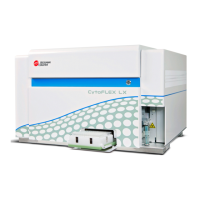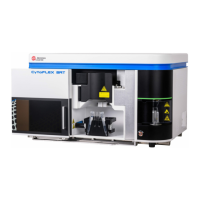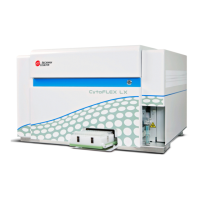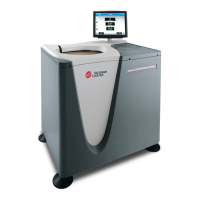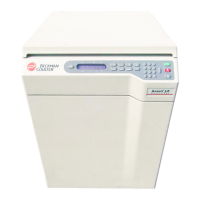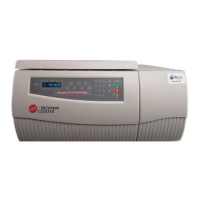PN 177196BB
1-15
GETTING TO KNOW YOUR INSTRUMENT
ANALYZER
1
3) All 10 cassette styles are physically identical but it is possible to instruct the
instrument to sample differently from cassette to cassette to accommodate
different tubes.
a) The bar-code label on the front of the cassette identifies the number of the
cassette (1 through 10) and the style (A or B).
b) The number of each cassette is labeled on the back of the cassette.
c) The letter of each cassette is labeled on the front of the cassette.
d) The letter identifies the cassette style, which defines the tube type/size that
can be used in it.
e) Software settings for each cassette style determine the sampling conditions
for each (the assigned depth the piercing needle and sampling probe are
lowered into the specimen tubes).
f) For the list of whole-blood collection devices compatible with the
Autoloader module, refer to the Hematology Tube List available on the BCI
website at www.beckmancoulter.com.
4) The ten tube positions within a cassette are numbered on top of the cassette.
a) This number is referred to as the position number.
b) When you see Cass./Position, the number assigned to the cassette is listed
first, followed by the number assigned to the position within the cassette.
c) When you load the cassette into the instrument, the tube in position 1 is
the first one processed.
5) While the Analyzer is idle, lower the left and right front doors and point out
the main components along a cassette’s path through the Autoloader. You can
elect to identify more.
a) The filled cassette is placed on the CASSETTE INPUT TRAY.
b) The Autoloader module moves the cassette to the front of the cassette
input tray and then along a track at the front of the Analyzer.
c) When the cassette reaches the MIXER ARM, the grabbers on the mixer
arm removes up to two specimen tubes from the cassette and rotates the
tubes to mix them.
d) The mixer arm returns the tubes to the cassette and the cassette is moved
to the BAR-CODE READER which reads the bar-code label on the
cassette, and the specimen tube if one is present, to identify the specimen.
e) The cassette is then moved back to the mixer arm. During the processing,
each specimen tube is mixed twice.
f) The cassette is then moved into the piercing position where the tube is
aligned with the bar-code reader and the piercing needle/sampling probe.
g) Before the tube is pierced, the bar-code reader rereads the bar-code labels.
h) Next the PIERCING NEEDLE AND SAMPLING PROBE are lowered to
the assigned depth in the specimen tube and a sample is aspirated.
Note: You cannot see the piercing needle and sampling probe as they are
normally raised.
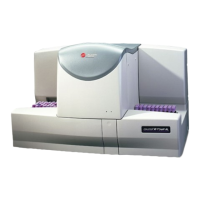
